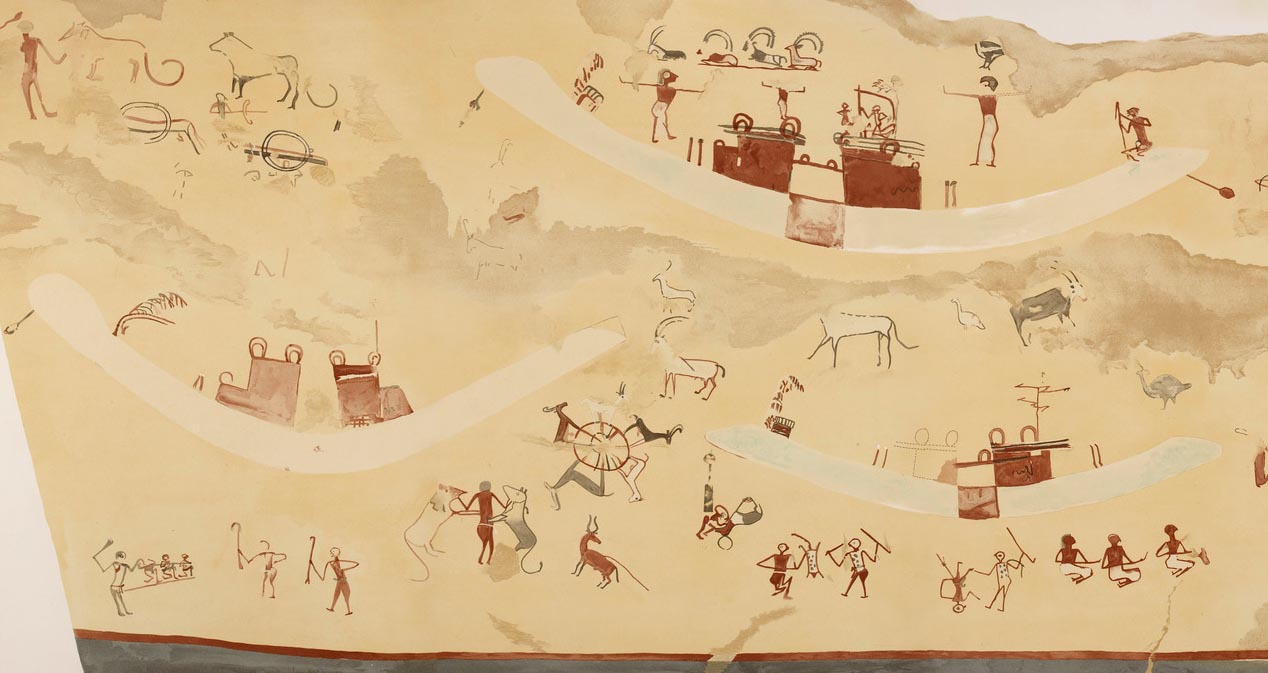For the past year I have been working for the British Museum, as a part of the EU project ‘Transforming the Egyptian Museum Cairo’ on the conservation of the wall painting from Tomb 100 at Hierakonpolis. Dating from 4000-2960 BC, it is the earliest known Egyptian wall painting. The surviving, backed, fragments of the painting are now at the Egyptian Museum in Cairo (EMC).
The wall painting was discovered in 1898-1899 by archaeologist F. W. Green. The tomb was located in low-lying desert, in an area threatened by cultivation, which may have influenced Green’s decision to detach and transport the painting to Cairo for display in the museum. Before doing so, he made a watercolour recording of the painting in situ (used here as the feature image).
The backed fragments of the painting had been off display at the EMC for a number of years due to the object’s delicate and vulnerable condition. My role in the project was as the Cairo based lead, working with conservators from the EMC to conserve the painting and enable redisplay, as a part of the wider project. This involved stabilisation and conservation of both the historic backing system and the original fragments.
The conservation work is now complete and the object stable, the surviving detail is readable, and it is ready for redisplay in the transformed Pre and Early Dynastic Gallery of the museum. There will be more opportunities to celebrate the work and the Transforming the Egyptian Museum Cairo project as it draws to completion later in 2021, but meanwhile here is more information about the the wider project, and an account of the wall painting, when first discoverd by F. W Green (see page 23 of the publication).
http://www.hierakonpolis-online.org/nekhennews/nn-11-1999.pdf
The feature image shows F.W. Green’s watercolour of the Painted Tomb at Hierakonpolis, cropped to show the area that makes up the object, as it is now. Image © Ashmolean Museum, University of Oxford
